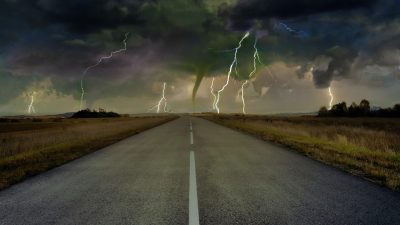Unveiling The Untold Destruction And Its Lasting Impact On China And Mongolia
In 1920, the Haiyuan earthquake struck the region along the border of China and Mongolia, leaving an indelible mark on history. This seismic event, long shrouded in mystery, not only devastated communities but also altered the very fabric of the region’s landscape. Despite the passage of time, many lesser-known aspects of this catastrophe remain largely unreported.
This blog seeks to uncover the hidden truths behind the Haiyuan disaster. By delving into archival records and contemporary analyses, we aim to reveal the intricate details of what transpired on that fateful day, and explore why this earthquake continues to resonate as a cautionary tale of nature’s unchecked fury.
The Devastation of Haiyuan: How the 1920 Earthquake Changed the Landscape
The Haiyuan earthquake was far more than a natural disaster – it was an event that transformed the physical and social landscape of the region. Entire villages were reduced to rubble as tremours shattered centuries-old structures, and fissures carved permanent scars into the land. The once-fertile terrain was irreversibly altered, a stark reminder of the quake’s overwhelming power.
In addition to the physical damage, the seismic event triggered a cascade of social and economic upheavals. Communities struggled to rebuild amidst the chaos, prompting a fundamental reevaluation of construction practices and disaster preparedness that continues to influence the region today.
Shattering Lives: The True Impact of the 1920 Haiyuan Earthquake on China and Mongolia
- Loss of Life and Community Displacement
The earthquake claimed the lives of hundreds of thousands, uprooting entire communities in its wake. Families were torn apart and countless individuals found themselves forced to abandon their homes, leaving behind a legacy of grief and displacement. - Economic Collapse and Infrastructure Destruction
With essential infrastructure obliterated, the economic fabric of the region was left in tatters. The disruption of trade and services not only delayed recovery efforts but also plunged communities into prolonged hardship. - Cultural and Social Disruption
The seismic event upended traditional lifestyles and cultural practices, as communities were forced to adapt rapidly to the post-disaster reality. This profound social disruption has had long-lasting effects on the communal identity and heritage of the affected areas.
Behind the Tragedy: Why the 1920 Haiyuan Earthquake Was More Destructive Than We Realised
A closer inspection of the Haiyuan earthquake reveals that its catastrophic impact was compounded by multiple factors. The absence of any early warning systems and the primitive state of disaster management at the time significantly exacerbated the loss of life and property. Historical accounts suggest that these shortcomings, coupled with the region’s vulnerable infrastructure, led to an unprecedented scale of devastation.
Furthermore, the geological conditions unique to the Haiyuan region played a critical role in intensifying the quake’s effects. The interplay of natural fault lines and environmental factors meant that the seismic waves unleashed a level of destruction that surpassed early reports, leaving a legacy of lessons that remain relevant today.
What Did We Miss About Haiyuan? The Hidden Stories of China’s 1920 Earthquake
Beneath the overwhelming statistics lie countless untold stories of personal loss, resilience, and community spirit. Many accounts of heroism and sacrifice have been overshadowed by the sheer scale of the disaster, leaving a gap in our historical narrative. These hidden narratives offer a more intimate glimpse into the human cost of the quake.
By sifting through archival documents and survivor testimonies, historians have begun to piece together the individual experiences that were lost in the broader tragedy. These accounts not only enrich our understanding of the disaster but also serve as poignant reminders of the enduring human spirit in the face of adversity.
Could the 1920 Haiyuan Earthquake Have Been Prevented? A Controversial Look
The question of whether the Haiyuan earthquake could have been mitigated has long sparked debate among historians and disaster experts. While it is impossible to prevent natural events entirely, many argue that improved planning and early detection could have significantly reduced the impact. The lack of robust emergency protocols at the time remains a contentious issue.
Critics contend that political indifference and technological limitations played a crucial role in the tragedy’s scale. In retrospect, a greater emphasis on disaster preparedness and investment in early warning systems might have spared many lives, prompting ongoing discussions about the lessons that history must teach us.
The Aftermath of the 1920 Haiyuan Earthquake: A Wake-Up Call for Future Generations
- Reevaluation of Disaster Management Policies
In the quake’s aftermath, authorities were forced to re-examine and overhaul their emergency response strategies. This critical reassessment paved the way for more structured and effective disaster management policies in the region. - Advancements in Seismic Research and Technology
The devastation spurred significant investments in seismic research, leading to the development of sophisticated early warning systems and improved construction standards. These technological advancements have since become instrumental in reducing the impact of subsequent earthquakes. - Strengthening Community Resilience
Communities affected by the disaster have since taken proactive steps to enhance their resilience. By integrating modern technology with traditional practices, they have developed robust networks designed to better withstand future seismic events.
The Silent Death Toll: How the 1920 Haiyuan Earthquake Wiped Out Entire Communities
The human cost of the Haiyuan earthquake is both staggering and sorrowful, with entire communities decimated and countless lives lost without proper recognition. Behind the stark statistics lies a silent death toll that speaks to the profound personal tragedies experienced during this catastrophic event. Each life lost represents a story cut short and a community forever changed.
This quiet devastation is a poignant reminder of the limitations inherent in historical record-keeping when confronted with large-scale natural disasters. Reflecting on this loss is essential, not only to honour those who perished but also to learn from the past in order to better prepare for future calamities.
The Haiyuan Earthquake: What It Taught Us About Nature’s Fury
The 1920 Haiyuan earthquake has imparted invaluable lessons regarding the sheer power and unpredictability of nature. Beyond the immediate destruction, the event fundamentally altered our understanding of seismic risks and the importance of robust disaster preparedness. It serves as a lasting testament to the forces that lie beneath our feet and the challenges they pose.
In the decades since, researchers have drawn on the lessons of Haiyuan to develop more accurate predictive models and resilient infrastructure. This ongoing learning process is critical in ensuring that modern communities are better equipped to mitigate the impact of similar natural catastrophes in the future.
Conclusion: The Legacy of the 1920 Haiyuan Earthquake—Have We Learned Enough?
In conclusion, the 1920 Haiyuan earthquake stands as a stark reminder of the formidable power of nature and the vulnerabilities in our societal constructs. The tragic event has driven significant advancements in disaster management and urban planning, yet it also underscores the need for continuous improvement in preparedness measures.
As we reflect on the legacy of Haiyuan, it is imperative that we remain vigilant and proactive in our efforts to enhance public safety and resilience. Only through sustained commitment to learning from the past can we hope to better protect future generations from nature’s unpredictable fury.
FAQs
What caused the 1920 Haiyuan earthquake?
It was triggered by tectonic shifts along fault lines where the Indian and Eurasian plates collided. This sudden energy release resulted in the catastrophic tremours that reshaped the region.
How many people were affected by the disaster?
An estimated 200,000 lives were lost, with millions more impacted by displacement and economic hardship. The sheer scale of the disaster left deep scars on local communities.
Where exactly did the earthquake strike?
The epicentre was located in the Haiyuan region, straddling the border between China and Mongolia. The quake’s effects were felt across a broad area, causing widespread devastation.
Was there any warning before the quake struck?
Unfortunately, early warning systems were virtually non-existent in 1920. Communities had little time to prepare, intensifying the tragedy and loss of life.
Can similar earthquakes be prevented today?
While natural events cannot be stopped, modern technology helps to mitigate their impact. Improved building standards and early warning systems are crucial in reducing future devastation.
References:
1920 Haiyuan earthquake – Wikipedia
https://en.wikipedia.org/wiki/1920_Haiyuan_earthquake
Haiyuan earthquake, 1920 | DisasterHistory.org
https://disasterhistory.org/gansu-earthquake-1920
The 1920 Haiyuan Earthquake: One of the 20th Century’s Deadliest
https://www.verisk.com/blog/the-1920-haiyuan-earthquake-one-of-the-20th-centurys-deadliest/
Death Toll of 1920 China Earthquake Higher than Previously Estimated
https://english.cas.cn/newsroom/archive/news_archive/nu2010/201502/t20150215_139978.shtml
The 1920 Haiyuan Earthquake Rupture and the Paleoearthquakes Feature of the Haiyuan Fault in China
https://ui.adsabs.harvard.edu/abs/2001AGUFM.S52D0664W/abstract
Magnitude of the 1920 Haiyuan Earthquake Reestimated Using Seismological and Geomorphological Methods
https://agupubs.onlinelibrary.wiley.com/doi/full/10.1029/2019JB019244 Landslides of the 1920 Haiyuan earthquake, northern China
https://link.springer.com/article/10.1007/s10346-020-01512-5




